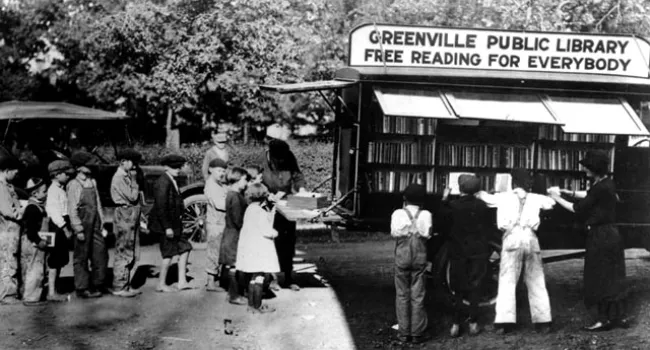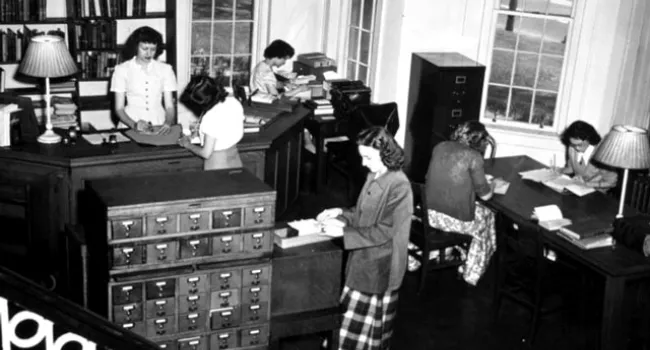
The Oberlin Unit of Faith Cabin Library, in Seneca. These libraries were the result of the cooperation of a white textile mill laborer and a teacher in an African-American school in Edgefield County in 1932, the economic low point of the Great Depression. In the rigidly segregated and unequally funded schools of South Carolina, many African-American schools had few books; most rural African-American families had none. When his friend E.W. Simpkins invited W.L. Buffington to the dedication of a new school for African-American children in Saluda, Buffington was distressed that it had no books. With his last dime, he bought five 2-cent stamps and wrote to ministers picked at random, asking them for books. The response eventually led to the building of 28 log-cabin libraries in isolated rural communities. Local congregations provided the labor and secured the supplies for the buildings, and the books came from individuals, groups, and churches who heard of Buffington's project. The books in the Seneca library were provided by Oberlin College. Buffington eventually finished a high school education himself, enrolled at Furman University, attended Oberlin College, and became a professor, first at Benedict College in Columbia, and later at Paine College in Augusta, Georgia.
Courtesy of the South Caroliniana Library




